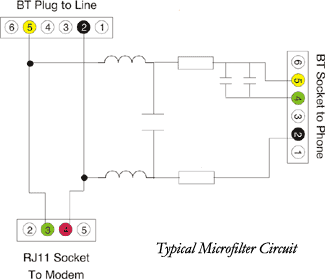Interesting what SimonH2 says, I noted that BT master sockets have spark gaps, and other items to protect from non direct lighting voltages, however in my house there is no earth run to the master socket, so the protection devices will do very little.
Actually, only the spark gap is there for surge protection, and it only protects against differential mode surges (ie between the two wires). As you say, there's no earth and so nothing at all to protect against common mode.
However with my mothers house the GPO have fitted a steel earth rod and a bare copper wire from it to the first telephone box. As to if still used I don't know?
I know back in the 1950's when the phone was fitted there was a shortage of lines, so my dad was put on a party line
...
I am not sure if the earth stake was to do with the party line or to stop damage due to lighting strikes?
The earth rod was purely for the party line, nothing to do with protection. You'd probably also remember having to press a button on the phone to get dial tone. I remember we had a party line when we moved back in 1969.
With a party line, they put the ringer between one line and earth for one user, and between the other line and earth for the other user - that's how they ring the two lines independently. For dialling out, you press the button and that connects one line to earth (again via the rod) which pulls in a relay at the exchange and connects you to the appropriate port in the exchange.
AFAIK, the earth rod wasn't there for any form of protection, other than incidental - in the same way that equipotential bonding isn't there for earthing, but does so as a side effect of one pat already being earthed.
the SP1 device was the spark gap, R1 and C1 were to make the bell ring, but there seems to be no earth connection.
Indeed. As above, the spark gap is for differential mode protection, the cap is to split off the AC ringing signal, and the resistor is really only there for testing - so even with nothing plugged in, there's a minimum load on the line when a test is run (if it's not there, the line will test as faulty - been there ...)
The broad band filter
seems to isolate the phone, but not the modem, ups sorry should not be called a modem with broadband as it only swaps the voltage from 50 to 5 it does not modulate or demodulate the signal.
Actually, it is still a modem, it really does do a heck of a lot more than just level shift ! xDSL systems are what they call "
discreet multitone" - in effect a lot of modems, each operating on a small bit of bandwidth (a "bin"), and handling a small amount of the overall bandwidth. Some modems/routers will show you the spectral use on the line (a graph of bits/bin) and it's usually clear to see the bit/bin drop off with frequency as the higher frequencies suffer higher attenuation and so can carry less information. The reason FTTC can do faster speeds than ADSL from the exchange is basically due to being able to use higher frequencies over the shorter cable, shorter cable = lower attenuation.
Also, the filter doesn't actually isolate the phone - it's just a low pass filter to keep the xDSL signals away from the phone and so stop the phone interfering with the broadband. Some filter do high-pass filter the broadband, others do nothing to it (as shown in your diagram). And contrary to popular belief (and if you believe some clueless BTOR people, the law

) you don't actually need a filter if there's no phone attached.
It does seem some master sockets do have an earth
...
Again, functional earth only - for systems that need it (primarily party lines if they still exist. IIRC it connects to terminal 4 of the internal wiring connectors - 2&5 being the voice pair, and 3 the ringer line (1&6 being completely unused in every system I've worked with).
As an aside, if you don't filter at the master socket (ie with a filtered faceplate) and feed all the internal wiring via the filtered port, it's generally advised to disconnect terminal 3 as it's rarely used by modern equipment and it creates a branched (ie in RF terms, quite complex) circuit for the ADSL signal.
They've moved on from party lines, and
I found this page that summarises the options used.
I have to say that that 'demo' rather surprises me. I would have thought that the impedance of "very stout earth braiding" at any frequency low enough for a human being to hear (which I presume is what you mean) would be extremely low.
I think it surprised those of us who thought we knew a bit about such stuff - but that was the effect.




